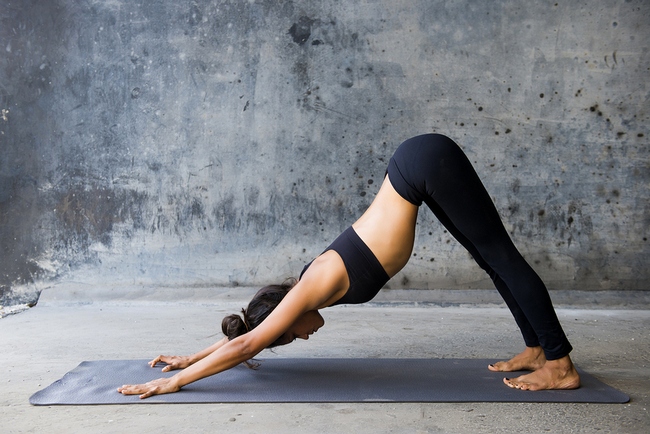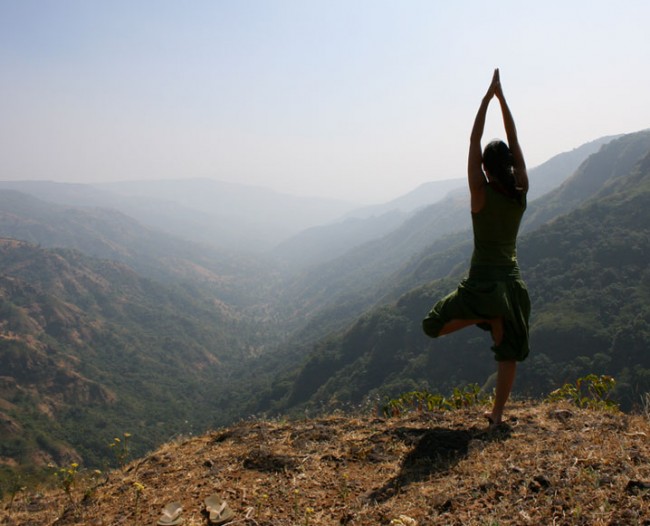- Make It Yourself Lavender Heart-Shaped Bath Bombs!
- 20 Things You Never Knew About “Down There”
- 12 Best Foods For Those Suffering From Arthritis Pain
- 12 Personal Hygiene Mistakes Almost Everyone Makes (Mom Never Told You About #4!)
- 15 Medicinal Plants And Herbs From The Cherokee People
- 12 Mind-Blowing Benefits Of Drinking Coconut Water During Pregnancy
- 12 Outstanding Winter Foods That Won’t Fatten You Up Like A Christmas Turkey
How Practicing Yoga Can Actually Fight Disease

Photo credit: bigstock.com
Do you know one of those people who do yoga regularly and, let’s be honest here, although you admire their flexibility, you don’t consider their yoga routine to be a ‘real’ workout? Yoga simply can’t give you the health protection that perhaps running or a gym workout does, right?
Wrong! Once thought of as almost useless other than to improve flexibility, yoga is now known to have numerous health benefits, and can protect us from various diseases. Studies show that all forms of yoga increase levels of good (HDL) cholesterol, while lowering bad (LDL) cholesterol and triglyceride levels. Unused triglycerides are stored by our bodies as fat, so this is a good thing! This could lead to weight loss and overall improved body composition. Weight loss means less stress on your heart and less pressure on your joints.
Recent research looked at 42 studies that investigated yoga in relation to a cardio-vagal response. The vagus nerve has the ability to lower your heart rate. One conclusion of this study was that for those who practice yoga regularly had lower heart rates, respiratory rates, and lower concentrations of cortisol. This report takes studies that have been performed over the past 34 years.
Out of 37 studies, it was shown that 28 of these reported improvements in blood pressure, especially those with hypertension who practiced Raja yoga.
All groups in these studies, whether they had hypertension or not, had improvements in their adrenal gland secretion which, in turn, lead to a drop in blood pressure. The chemicals and hormones that are associated with a physical and mental sense of well-being and happiness, along with an increase in antioxidants, were also increased in all subjects.
Subjects also reported that their sleep quality and energy levels were improved, along with improved posture. If you are chronically ill, injured, or disabled, this is good news for you as many yoga postures as simple to do but have multiple health benefits. Yoga will give you some of those feel good endorphins that will help you feel better. Find out how to choose yoga poses for you.
One of the most encouraging pieces of information to come out of these studies is in the area of stress. Stress is a major cause of heart disease, and a lowered immune system, which leaves the body open to numerous chronic health issues, along with cold and flu viruses. Stress is a silent killer, often leading to continued high blood pressure, heart attacks, and heart disease.
Continue to Page 2

Photo credit: bigstock.com
Yoga is major stress killer. Studies show yoga offers tremendous benefits in the area of stress relief, which helps in all other areas of the body.
Another study looked at 45 caregivers of those dealing with family members who had Alzheimer’s and found that there was actually a genetic response in those who practiced Kirtan Kriya Meditation, or KKM, a yoga practice that focuses mainly on chanting and rhythmic breathing. This study was published in an online edition of Psychoneuroendocrinology by Dr. Helen Lavretsky of UCLA.
This study divided subjects into two groups. The first group did 12 minutes of KKM yoga daily, performed at the same time of day every day, for a period of 8 weeks. The second group merely rested with their eyes closed and listened to relaxing music for 12 minutes per day.
Researchers then compared blood samples that had been taken from the groups both before the test and at the end of the test 8 weeks later. Scientists found that 68 genes were responding differently in the group that did the KKM yoga, which resulted in reduced inflammation. Both groups were engaged in relaxing behavior, but the first group’s activity in one form of yoga, which stopped inflammation at a cellular level.
Caregivers were chosen for this study, as giving care to seriously ill family members is a significant stress factor and older caregivers reported very high stress levels, along with depression, and significantly higher levels of the biological markers of inflammation than those in the general population that are not primary caregivers. This study offers proof that yoga and/or meditation reduce inflammation and stress in the body.
Continue to Page 3

Photo credit: bigstock.com
Yoga is a great exercise program for just about everyone as it needs no special equipment. Simply obtain a DVD or book with some basic yoga poses and then build on them as your experience and understanding grows.
One study showed that women who practiced yoga on a regular basis for at least two years had significantly lower levels of inflammation than women who only recently took up yoga. This study, performed at Ohio State, chose 50 women between the ages of 30 and 65 as their subjects. They had differing degrees of yoga experience; the first group had practiced yoga at least twice per week for a minimum of two years, and “novices” that had performed only between 6 and 12 sessions. These two groups were similar in terms of body fat and levels of physical fitness, as these are known factors for the influence of inflammation. Subjects underwent stressful tasks, then practiced yoga, after which, blood tests were taken and compared. The “novice” yoga participants had higher inflammation markers than the more experienced yoga “experts.”
Although researchers aren’t exactly sure why yoga would have this type of powerful effect on inflammation in the body, they believe it has to do with stress reduction.
SEE ALSO: Yoga For Beginners Infographic
These studies clearly show that yoga has considerable health benefits. With no known side effects, no barriers to beginning a program, and combined with an instructor, yoga can’t cause harm; it can only bring stress relief and health benefits. Although final studies need to be performed to understand why yoga works, the fact of the matter is, it does work, no matter your age, your weight, or your level of fitness. There is no good reason why you shouldn’t get started with some type of yoga program today!
Sources:
































